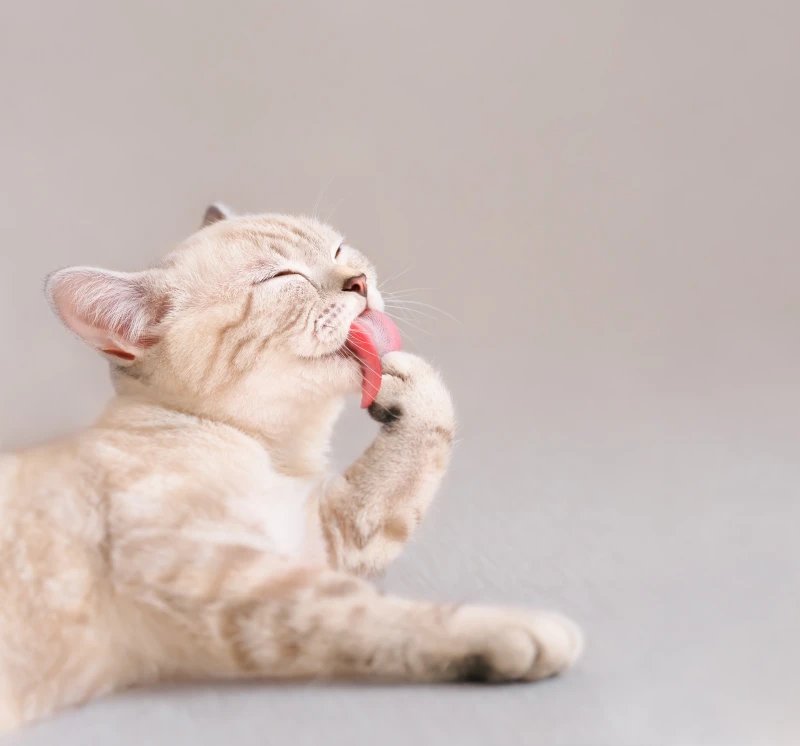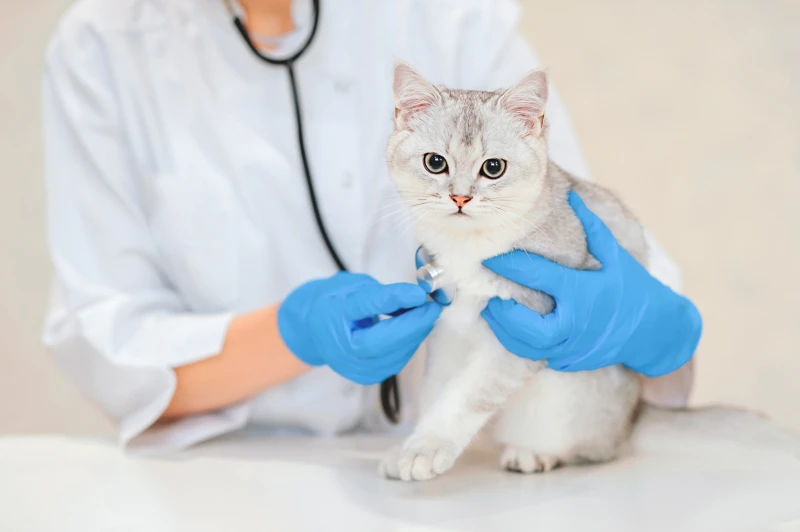Cat breeds come in various colors, sizes, forms, and personalities. Each breed, from the beautiful Siamese to the fluffy Maine Coon, has the traits that make it stand out. Yet, have you ever thought about how these differences happen? Genes hold the key to the answer. We’ll look at how genetics affect cat breeds and try to figure out the secrets behind the traits that make our feline friends so interesting and different.
How genetics works
Let’s go over some basics first before we talk about how genes affect cat breeds. Genetics is the study of inheritance, or how traits are passed down from parents to children. To all living things, cats inherit genetic material from their parents in the form of DNA. DNA holds instructions for making cells and keeping them healthy.
Some traits, like hair color, fur length, and body size, are controlled by genes, which are pieces of DNA. Each gene is passed down twice, once from each parent to the kitten. Alleles are the different forms that these genes can take. That’s why different breeds of cats have such a wide range of features: the alleles they inherit determine which traits they show.
How to Understand Inheritance Patterns
To understand how genes affect cat breeds, you need to know how inheritance works. Dominant and recessive genes are two basic ideas. When present, dominant alleles take over and override the effects of recessive genes. There must be two copies of a recessive allele for it to be produced.
Take clothing color as an example. Cats’ hair color is controlled by a gene that has several alleles, some of which make fur black, orange, or white. There is more of the allele for black fur (B) than the allele for orange fur (b). If a cat has two copies of the dominant allele (BB) or one copy of each (Bb), its fur will be black. If it has two copies of the negative allele (bb), its fur will be orange.
Selective breeding and changes in genes
Cat breeds have changed a lot because of selective breeding, which is the process of mating cats with features that people want. Breeders choose cats with certain traits and then mate them so that those traits are passed on to the next generation. As time goes on, this process has created unique breeds with traits that can be predicted.
But careful breeding can also make breeds less genetically different from one another. When breeders consistently choose for certain traits, they accidentally limit the gene pool. This makes inherited diseases more common and lowers the diversity of genes generally. To keep communities healthy and reduce these risks as much as possible, breeders must carefully oversee breeding programs.
Genetic Problems That Affect Many Cat Breeds
Many good things about selective breeding have happened to cat breeds, but it has also made some genetic diseases more common. Because of their genes, some breeds are more likely to get certain health problems.
For example, Persians are more likely to have polycystic kidney disease, which is passed down through families and causes fluid-filled cysts to form in the kidneys. A skeletal disease called osteochondrodysplasia affects a lot of Scottish Folds. It leads to abnormal bone growth and joint deformities. Breeders can use selective breeding to lower the number of people who have these diseases by learning about the genes that cause them.
Changes and Their Role
Cat breeds are also shaped by mutations, which are changes that happen naturally in DNA. Malformations can sometimes create new traits that are unique to a certain breed. As an example, the Scottish Fold breed’s bent ears come from a natural change that happened in the 1960s.
Mutations can add new features, but they can also cause genetic disorders if they mess up important genes or control parts. To stop the spread of genetic diseases, responsible breeding practices include keeping a close eye out for dangerous mutations and not mating people who have these mutations.
Epigenetics and the Role of Environment
Genetics tells us how features are formed in an organism, while epigenetics studies how environmental factors can change how genes are expressed. Diet, worry, and exposure to toxins are all environmental factors that can change how genes are turned on or off.
This can affect how cats grow and behave. For instance, a study found that what a mother eats while she is pregnant can change the way her fur grows. To fully understand how cat breeds grow and change over time, you need to know how genetics and the environment affect each other.
Health checks and genetic testing
Genetic testing has come a long way, and now breeders can check cats for inherited diseases and genetic tendencies. By finding animals that carry dangerous alleles, breeders can choose which pairs to breed with more confidence, lowering the risk of passing genetic diseases on to future generations.
Genetic testing also helps breeders keep genetic diversity in groups by stopping animals from breeding with each other too much. For the long-term health and welfare of cat breeds, breeding plans must include genetic testing and health screening.
What are hybridization and crossbreeding?
Cat breeds have been improved by adding new traits and increasing genetic variety through hybridization, which is the mating of individuals from different species or populations. Crossbreeding two well-known breeds can create hybrid children with their traits, and in some cases, it can even lead to the creation of whole new breeds.
For example, the Bengal breed came about when domestic cats were crossed with Asian leopard cats. This created a beautiful coat pattern that looks like it came from wild cats. Even though mixing can bring about good traits, it also brings up moral questions about the animal’s well-being and the protection of breed standards. When hybridization is used in breeding programs, it needs to be carefully planned and thought out to protect the cats’ health and the purity of established breeds.
Conclusion
Genetics is a big part of why there are so many different types of cats today. With the help of careful breeding, inheritance patterns, and sometimes mutations, breeders have made dogs and cats with unique looks and behaviors. To protect cat populations in the long run, however, breeders must put genetic health and diversity first. Knowing how different cat breeds are formed genetically helps us enjoy their beauty and intelligence even more.



